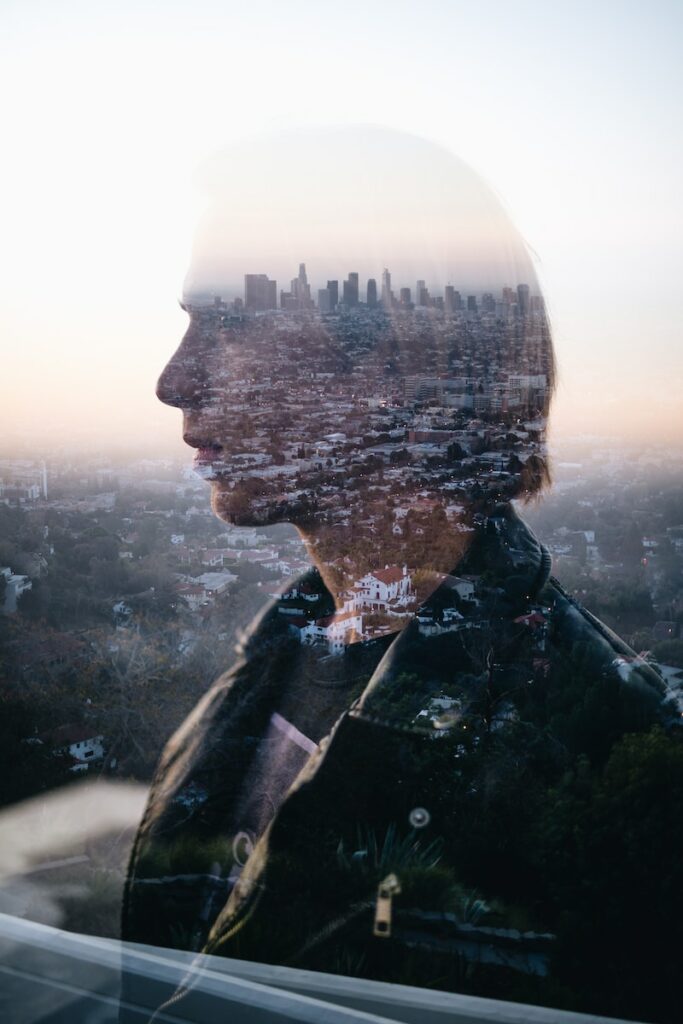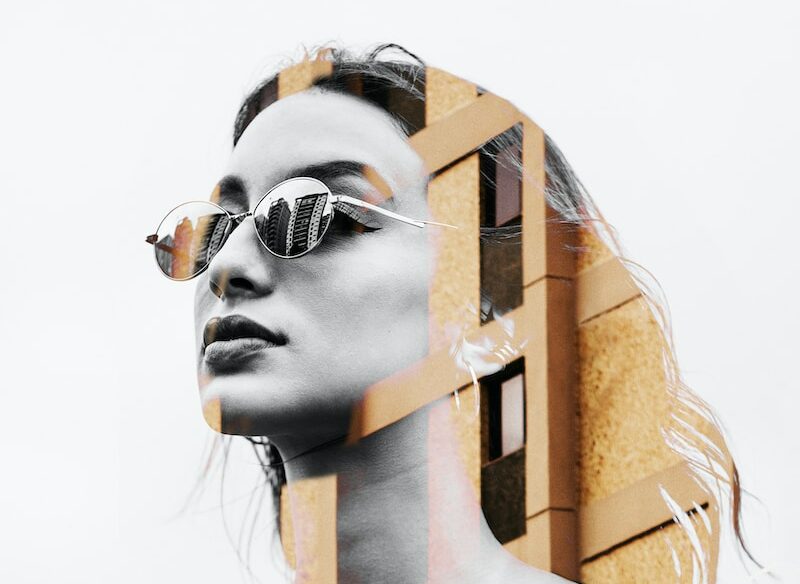Welcome to “Twice the Story: Mastering Double Exposure Photography”, where we delve into the captivating world of double exposure photography. Explore the fascinating techniques behind this artistic form of storytelling, as we unravel the intricacies of blending two images into one. Whether you’re an experienced photographer or just starting out, join us as we unlock the secrets of creating mesmerizing double exposure images, capturing twice the essence and emotion in each frame.
Table of Contents
- The Art of Double Exposure Photography
- Choosing the Right Equipment for Double Exposure Photography
- The Best Time for Stunning Double Exposure Photography
- Frequently Asked Questions
- What is double exposure photography?
- How do I achieve double exposure with my camera?
- What camera settings should I use for double exposure?
- What subjects work well for double exposure photography?
- Are there any specific techniques to master double exposure photography?
- Can I achieve double exposure effects without a DSLR camera?
- Where can I find inspiration for double exposure photography?
- Wrap Up
The Art of Double Exposure Photography
Double exposure photography is a captivating technique that allows photographers to create stunning and ethereal images by merging two or more subjects into a single frame. This creative approach opens a world of possibilities, enabling photographers to tell a unique story with every shot. In this article, we will delve into the realm of double exposure photography, exploring the intricacies involved and sharing techniques to master this art form.
Discovering the Perfect Subject
The beauty of double exposure photography lies in the ability to combine different elements to create a harmonious blend. When selecting your subjects, look for interesting features that can complement each other and tell a compelling story. Consider pairing contrasting objects, like a delicate flower against a bold cityscape, or a human silhouette against a natural landscape.
To make your photographs truly stand out, experiment with textures, patterns, and shapes. Play with the juxtaposition of softness and ruggedness, light and dark, or symmetry and asymmetry. Remember, the key is to create a visually striking composition that captivates the viewer’s attention.
Techniques to Enhance your Double Exposure Photography
To master the art of double exposure photography, it is important to understand various techniques that can elevate your images from ordinary to extraordinary. Here are some valuable techniques to consider:
- Multiple Exposures: The fundamental technique behind double exposure photography is layering multiple exposures onto a single frame. Experiment with different exposure settings, such as overexposing or underexposing, to achieve the desired effect.
- Masking: By using masks or physical barriers, you can selectively expose certain parts of the frame while keeping others hidden. This allows for precise control over the merging of subjects and creates intriguing visual effects.
- Blending Modes: Most modern cameras and photo editing software offer blending modes that can be applied to images. These modes determine how different layers interact and can result in a wide range of effects. Explore blending modes like screen, overlay, or lighten to achieve the desired mood and atmosphere in your photographs.
- Foreground and Background: Pay attention to the placement of your subjects within the frame. Experiment with having one subject as the foreground and another as the background, creating depth and adding layers to your composition. This technique adds dimensionality and visual interest to your double exposure images.
Remember, mastering double exposure photography requires practice, creativity, and a willingness to experiment. Allow yourself to push the boundaries and step out of your comfort zone. Embrace the unexpected, as sometimes the most awe-inspiring images arise from serendipitous moments. Whether you are capturing portraits, landscapes, or everyday objects, the possibilities are endless. So, grab your camera and embark on a journey to unlock the magic of double exposure photography.
Did you know that double exposure photography dates back to the 19th century? Originally achieved by exposing the same film frame multiple times, modern cameras now offer this technique as a creative tool, resulting in mesmerizing and innovative images.
Choosing the Right Equipment for Double Exposure Photography
When it comes to mastering double exposure photography, having the right equipment can greatly enhance your creative possibilities. While the camera itself plays a crucial role, the lenses and other accessories you choose can also make a significant difference in the quality and artistic expression of your images. Let’s explore the main components you should consider:
The Camera: Unlocking Double Exposure Potential
When selecting a camera for double exposure photography, look for one that offers manual exposure control and multiple exposure capabilities. Manual control allows you to have complete command over the exposure settings, while multiple exposure functionality enables seamless blending of multiple images in-camera.
Many mirrorless cameras and DSLRs feature these advanced capabilities, presenting myriad options for achieving stunning double exposure effects. These cameras provide superior control over exposure, depth of field, and other settings critical to capturing the perfect double exposure shot.
For a budget-friendly option, consider exploring film cameras. Certain analog models, such as 35mm SLRs or medium format cameras, can create unique double exposure effects that may be difficult to replicate with digital cameras. Film cameras offer a distinct character and grain that can add a vintage touch to your photographs.
The Lenses: Unleashing Your Creative Vision
Lenses are equally important in double exposure photography. The focal length, aperture, and lens type can dramatically alter the outcome of your images. Here are a couple of lens options to consider:
- Prime Lenses: Prime lenses with wide apertures, such as a 50mm f/1.8 or a 35mm f/2.0, are well-suited for double exposure photography. These lenses allow for greater control over depth of field and low-light situations, resulting in striking and ethereal images.
- Macro Lenses: If you want to explore the finer details of your subjects in double exposure photography, a macro lens is an excellent choice. These lenses enable close-up shots with exceptional clarity, capturing intricate textures and patterns that add depth and interest to your final composition.
Other equipment, such as a tripod, can further enhance the precision and stability required for double exposure photography. A tripod ensures that your camera remains steady during long exposure times, resulting in sharper, properly aligned images.
Ultimately, choosing the right camera, lenses, and accessories for double exposure photography comes down to your creative vision. Experimenting with different combinations will help you develop your unique style and create truly captivating images.

The Best Time for Stunning Double Exposure Photography
Timing plays a crucial role in capturing breathtaking double exposure photographs. The ideal time depends on the desired effect you want to achieve. However, there are a few general guidelines to follow.
One optimal time for double exposure photography is during the golden hour, which occurs shortly after sunrise or before sunset. The warm and soft light during this period creates a magical ambiance, enhancing the overall impact of your double exposure images. The interplay of colors and shadows adds depth and dimension to your subjects, resulting in visually striking photos.
Another opportune time is in the early morning when the world is waking up. As the world is still and peaceful, you can capture mesmerizing double exposures with serene landscapes or delicate wildlife. The soft light of dawn casts a delicate glow, making your subjects come alive with ethereal beauty.
Finding the Perfect Vantage Point
To capture the perfect double exposure photograph, you need to find the best vantage points and positions that grant you a unique perspective. Experimenting with various positions can lead to captivating results.
One technique to consider is framing your subject against a striking background. This could be a vibrant cityscape, a stunning mountain range, or an expansive seascape. The contrast between your subject and the backdrop creates a dynamic composition that immediately grabs the viewer’s attention.
Another approach is to position your subject in a way that aligns with the lines or shapes in the background. For instance, if shooting in an urban environment, you can frame your model in a way that their body aligns with the lines of the buildings or bridges. This creates a sense of harmony and balance in your double exposure images.
Alternatively, consider shooting from unexpected angles. Instead of the traditional straight-on perspective, try crouching down low or shooting from above. This unique viewpoint adds visual interest and can make your subject appear more dynamic and intriguing.
Finally, don’t limit yourself to outdoor locations. Double exposure photography can also be done indoors, offering a whole new range of creative options. Experiment with using different backgrounds, textures, or props to create double exposures with a distinct and artistic flair.
Remember, the key to mastering double exposure photography lies in experimentation and exploration. Embrace new locations, lighting conditions, and viewpoints to push the boundaries of your creativity. By harnessing the right timing and finding the perfect vantage point, you can capture captivating double exposure photographs that tell a story twice as powerful.
Tip: When shooting double exposure photography, use a tripod to keep your camera steady and ensure alignment between the multiple exposures. This will result in a sharper and more precise final image. Experiment with different exposure settings and subjects to create unique and captivating double exposure photographs.
Frequently Asked Questions
What is double exposure photography?
Double exposure photography is a technique that combines two or more images into a single frame, creating a unique and blended composition.
How do I achieve double exposure with my camera?
To achieve double exposure, you can either use a camera that has a built-in multiple exposure feature or manually overlay two images in post-processing using software such as Adobe Photoshop.
What camera settings should I use for double exposure?
It is best to start with a low ISO setting, around 100-200, to minimize noise in the final image. Use a small aperture (high f-number) to increase the depth of field and maintain sharpness throughout the composition. Experiment with different shutter speeds to control the exposure of each image.
What subjects work well for double exposure photography?
Subjects with distinct shapes and textures, such as silhouettes, landscapes, and cityscapes, tend to work well for double exposure photography. Experiment with different combinations to find what works best for your artistic vision.
Are there any specific techniques to master double exposure photography?
Yes, there are various techniques to master double exposure photography. Some common techniques include using complementary colors, aligning prominent features of both images, and adjusting the transparency or blending modes in post-processing.
Can I achieve double exposure effects without a DSLR camera?
Absolutely! While DSLR cameras offer more control and flexibility, you can still achieve double exposure effects with point-and-shoot cameras or even your smartphone. Simply use photo editing apps that offer double exposure features or manually overlay images using layering techniques.
Where can I find inspiration for double exposure photography?
There are numerous sources of inspiration for double exposure photography. Explore art galleries, photography books, online portfolios, and social media platforms such as Instagram to discover the work of talented photographers and gain ideas for your own compositions.
Wrap Up
Now that you have learned the art of double exposure photography, it’s time to put your skills into action. Grab your camera, be creative, and experiment with different techniques. Remember, practice makes perfect.
Don’t be afraid to step out of your comfort zone and push the boundaries of this unique photographic style. Embrace the storytelling aspect and capture images that tell twice the story.
If you have any questions or want to share your experiences with double exposure photography, feel free to leave a comment below. Engage with fellow photography enthusiasts and inspire each other’s creativity. Happy shooting!
